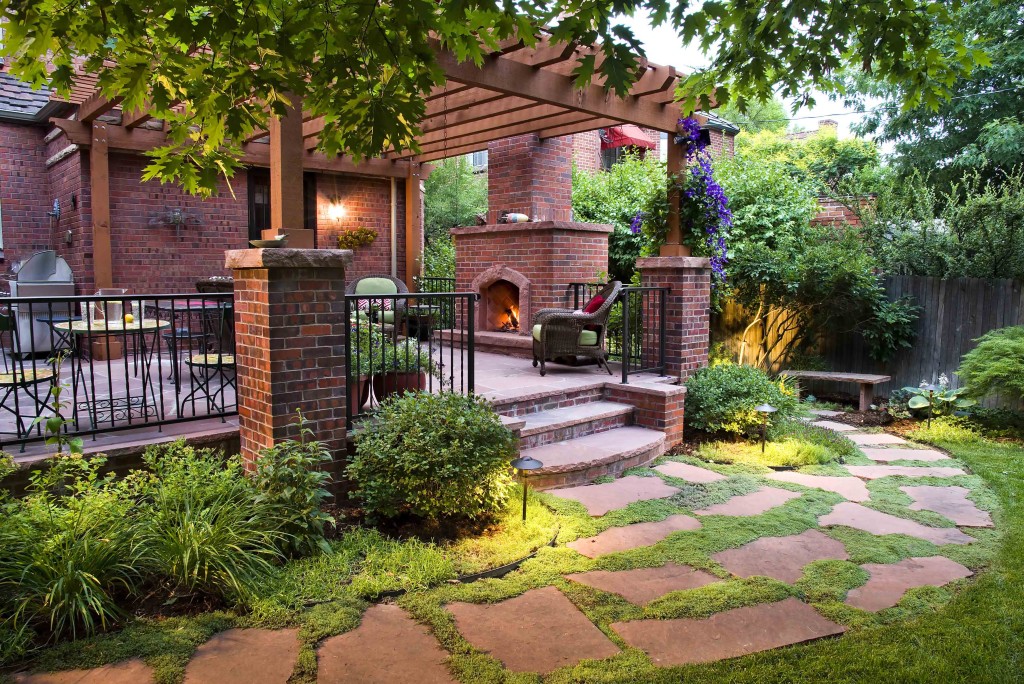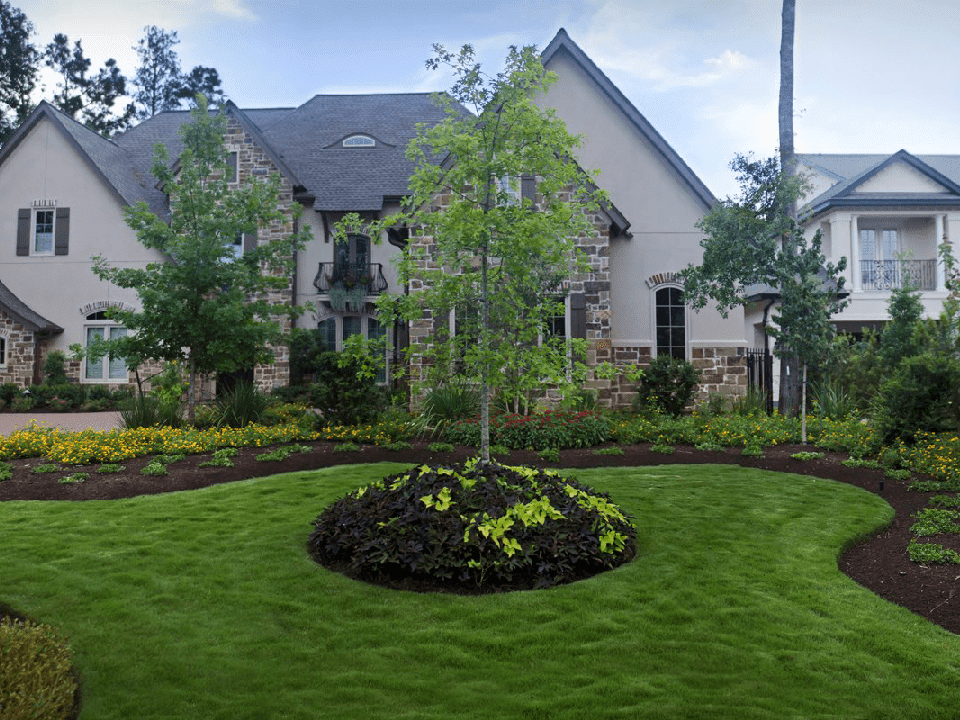8 Easy Facts About Hilton Head Landscapes Described
How Hilton Head Landscapes can Save You Time, Stress, and Money.
Table of ContentsHow Hilton Head Landscapes can Save You Time, Stress, and Money.Not known Factual Statements About Hilton Head Landscapes Hilton Head Landscapes Things To Know Before You BuyAn Unbiased View of Hilton Head LandscapesHilton Head Landscapes Things To Know Before You Get ThisSome Ideas on Hilton Head Landscapes You Should KnowThe Main Principles Of Hilton Head Landscapes The smart Trick of Hilton Head Landscapes That Nobody is Discussing
Form compatibility is also a major part of unity in designone or more strikingly different forms are great for contrast and focus, yet generally all other forms must have some resemblances for a combined appearance. Texture refers to exactly how rugged or fine the surface of the plant or hardscape material feels and/or looks.
Examples of plants with rugged structure consist of philodendrons, agaves, bromeliads, hollies, palms, and hydrangeas. Attributes that produce fine appearance include little foliage; thin, strappy leaves (grasses) or tall, slim stems; small, dense twigs and little branches; long stems (creeping plants); and little, fragile flowers.
Facts About Hilton Head Landscapes Uncovered
Many plants are medium appearance, in that they can not be defined as having either rugged or great appearance. Medium-textured plants act as a history to link and combine the rugged- and fine-textured plants.

To make an area feel smaller sized, position the crude appearances along the external border and the fine textures closest to the audience. The detail of the crude appearance makes the plants show up closer and makes the area really feel smaller sized. The regarded appearance of plants can additionally transform with the distance from the plant.
The Basic Principles Of Hilton Head Landscapes
Bold shades boost the contrast and make the texture appear coarser, while muted shades can squash appearance. Hardscape with a coarse texturesuch as very rough rocks and strong, huge timberstends to make all plant product appear much more medium distinctive. Developers typically create a structure study (Figure 8) theoretically to assist determine the setup of plant materials.
Color in plant product and hardscape adds interest and variety to the landscape. Color is the most noticeable element in the landscape and is usually the emphasis of a lot of property owners; nonetheless, it is likewise the most momentary element, normally lasting just a few weeks a year for private plants.
An Unbiased View of Hilton Head Landscapes
A simple description of the color wheel consists of the three key colors of red, blue, and yellow; the three secondary colors (a mix of two primaries) of green, orange, and violet; and six tertiary colors (a mix of one nearby main and additional shade), such as red-orange. Shade concept clarifies the relationship of shades per various other and how they ought to be used in a composition.

Comparable (occasionally called unified) color design are any 3 to 5 colors that are surrounding on the color wheel, such as red, red-orange, orange, yellow-orange, and yellow, or blue, blue-violet, and violet (landscapers in bluffton sc). The colors relate to every various other because they normally include 2 primaries mixed to create a secondary and 2 tertiary shades, which implies they share usual homes
They tend to have high contrast in between them. One of the most typical sets are violet and yellow, red and environment-friendly, and blue and orange. Complementary colors are frequently located naturally in blossoms; a common pair is yellow and violet. Color is located in the blossoms, foliage, bark, and fruit of plants.
The 3-Minute Rule for Hilton Head Landscapes
Green foliage in all its numerous shades is the leading shade by amount, yet other colors record attention quicker due to their high comparison to the color environment-friendly. Color is additionally found in buildings, rocks, pavers, wood, and furnishings. Many shades in natural products, such as stone and wood, are typically muted and often tend to be variants of brown, tan, and light yellow.
Shade is an essential component for creating interest and selection in the landscape. Shades have buildings that can influence emotions, spatial understanding, light top quality, equilibrium, and focus. One residential property of color is defined relative to temperaturecolors seem great or warm and can influence emotions or feelings. Cool colors tend to be relaxing and must be used in areas for leisure and tranquility.
Not known Incorrect Statements About Hilton Head Landscapes
Amazing colors have a tendency to decline and are viewed as being farther away, making a room feel larger. Color can likewise be utilized to record focus and straight views.
For instance, intense yellow, which has the greatest strength, additionally has a high contrast with all various other shades (often referred to as a "pop" of shade) and ought to be conserved. A percentage of intense shade has as much visual weight as a huge amount of a much more restrained or weaker color.
Analogous (often called harmonious) color schemes are any type of 3 to 5 colors that are nearby on the shade wheel, such as red, red-orange, orange, yellow-orange, and yellow, or blue, blue-violet, and violet. The colors are associated to each other due to the fact that they usually include two primary colors mixed to form a secondary and two tertiary shades, which suggests they share typical properties.
A Biased View of Hilton Head Landscapes
Complementary shades are commonly discovered naturally in blossoms; a typical pair is yellow and see this site violet. Shade is found in the flowers, vegetation, bark, and fruit of plants.
Green foliage in all its numerous shades is the dominant shade by quantity, however other shades record attention much more readily as a result of their high comparison to the color eco-friendly - Landscaping bluffton sc - https://www.tumblr.com/h1tnhdlndscps/754928253939187712/family-owned-and-operated-hilton-head-landscapes?source=share. Shade is likewise found in buildings, rocks, pavers, timber, and furniture. The majority of colors in natural products, such as rock and wood, are generally low-key and often tend to be variations of brownish, tan, and pale yellow
What Does Hilton Head Landscapes Mean?
Shades have residential properties that can influence feelings, spatial perception, light top quality, equilibrium, and emphasis. Cool colors have a tendency to be relaxing and need to be made use of in locations for leisure and tranquility.
Great shades have a tendency to decline and are regarded as being further away, making an area feel bigger. Shade can likewise be used to capture focus and straight views - https://www.ted.com/profiles/47214730.
Intense yellow, which has the greatest intensity, likewise has a high contrast with all various other shades (frequently explained as a "pop" of color) and need to be utilized sparingly. A percentage of intense shade has as much visual weight as a large quantity of a much more suppressed or weaker shade.